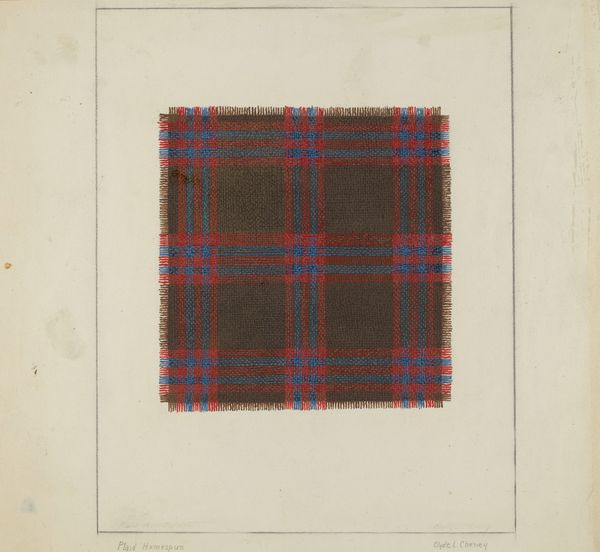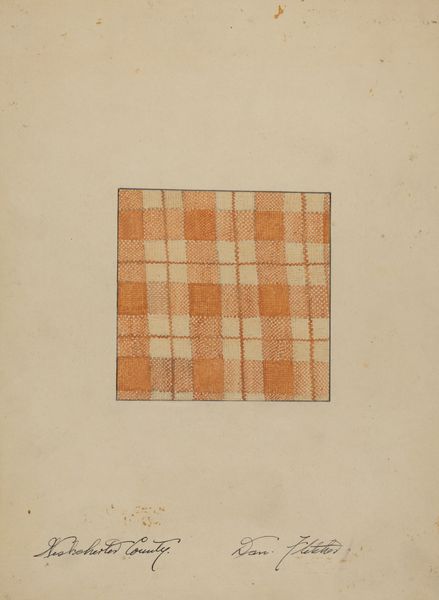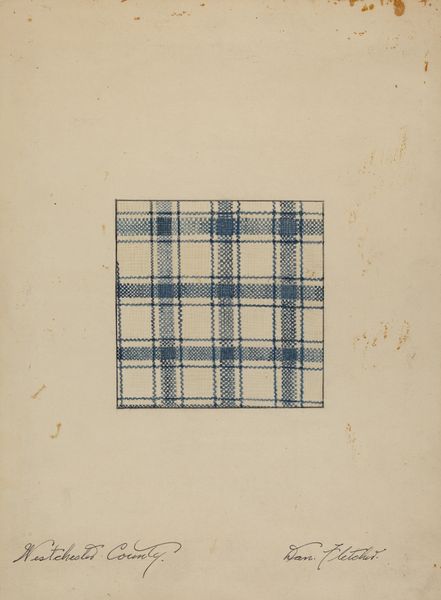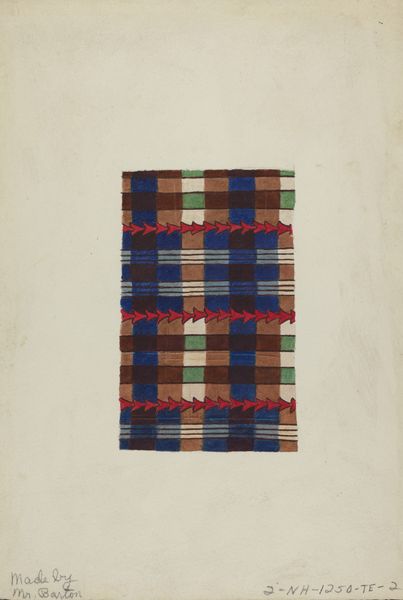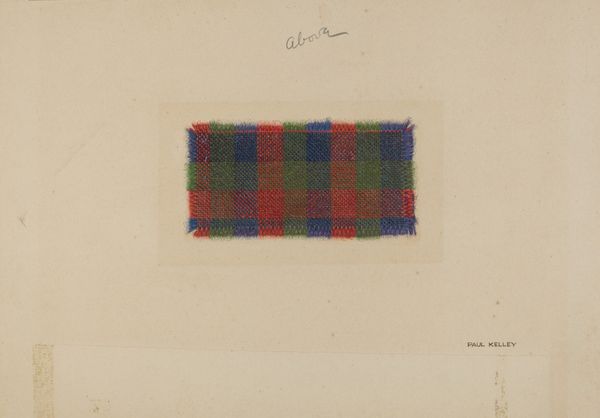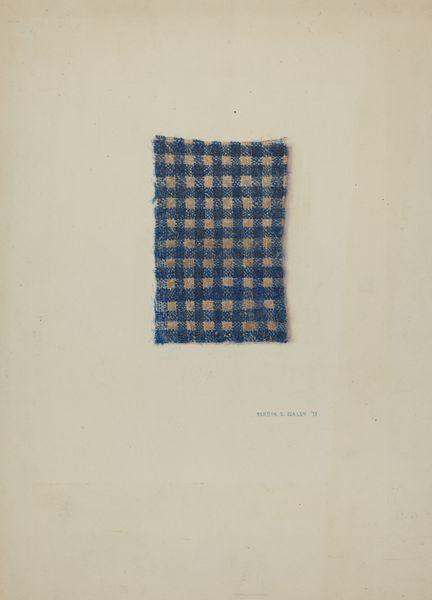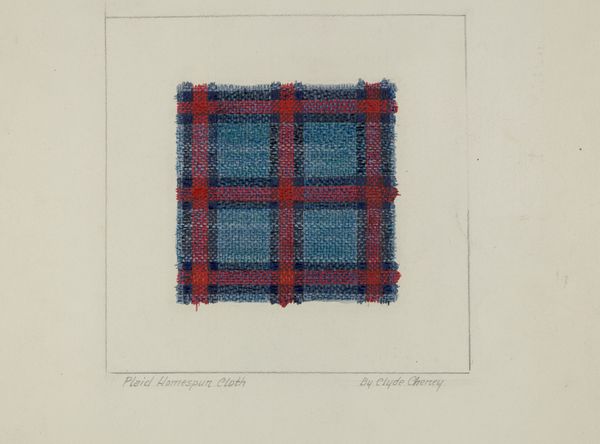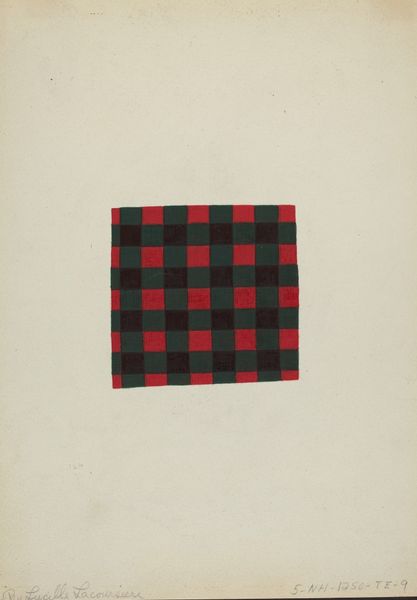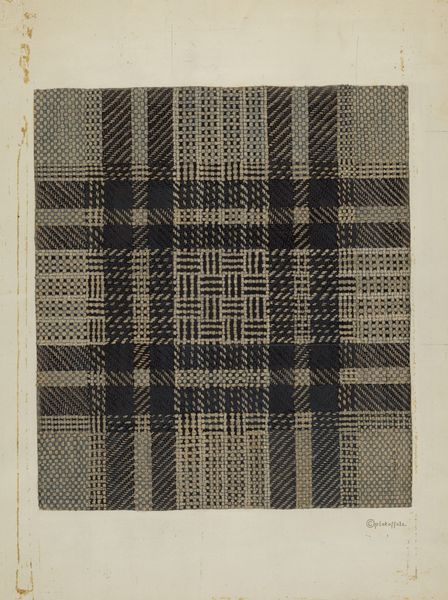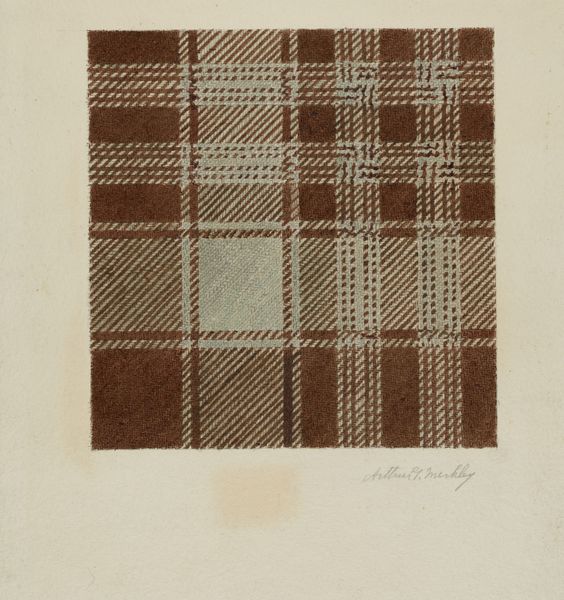
drawing, mixed-media, textile, paper, watercolor
#
drawing
#
mixed-media
#
water colours
#
textile
#
paper
#
watercolor
#
geometric
#
watercolor
Dimensions: overall: 36.8 x 29 cm (14 1/2 x 11 7/16 in.)
Copyright: National Gallery of Art: CC0 1.0
Editor: So, here we have "Textile," a mixed-media piece from sometime between 1935 and 1942 by Clyde L. Cheney. It's this soft, almost fuzzy, square of plaid, a blend of drawing, textile, and watercolor elements. I’m intrigued by how craft and fine art seem to merge here. How would you approach interpreting a piece like this? Curator: Well, focusing on its materiality is key. It's not simply about the aesthetic pleasure of the design but the entire process. Cheney’s choice to depict a textile using, and even combining, various mediums like watercolor, drawing and, potentially, fragments of actual textile raises several points: what kind of labor went into producing similar textiles? Were they luxury items? Editor: That makes sense. It shifts the focus from the image itself to the broader world of production and consumption. So, the 'craft' element is crucial? Curator: Precisely. Often "craft" is a loaded term, especially when considering gendered or classed associations of labor. Is this textile a fragment of "women's work", or the documentation of a textile intended for an industrial application? What statement, therefore, might the artist be making? Is it highlighting labor usually dismissed as ‘domestic’ versus 'high' art? Editor: I see, it makes me consider not just the "what" but the "how" and "why" it was made. How it connects to everyday life and work. Curator: And it encourages us to think about value, both artistic and economic. What were the prevailing social and economic conditions when this piece was made? Understanding that provides valuable context. Editor: I hadn't considered that the seemingly simple form could be so rich with layers of meaning related to labor and value. Thanks! Curator: Exactly, analyzing the piece’s components in this way helps reveal so much more than just its surface appearance.
Comments
No comments
Be the first to comment and join the conversation on the ultimate creative platform.
